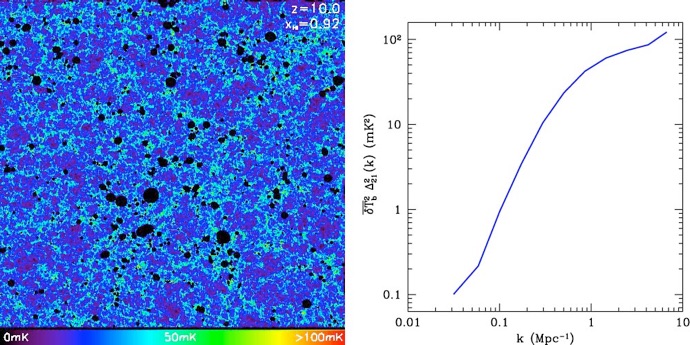

Deus ex Machina (DexM)
and
21cmFAST
What are “semi-numerical” simulations?
Semi-numerical simulations use more approximate physics than numerical simulations, but independently generate 3D cosmological realizations.
What is the point?
There are two main hurdles to overcome when studying the high-redshift Universe: (1) our scant knowledge of high-redshift astrophysics, and (2) a very large range of relevant scales. To help overcome these difficulties, we have introduced the semi-numerical codes, DexM and 21cmFAST (specialized for fast, large-scale simulations of the cosmological 21-cm signal). These semi-numerical modeling tools are portable and fast, allowing for explorations of wide swaths of astrophysical parameter space and an unprecedented dynamic range (>Gpc simulation boxes!).
We combine the excursion set formalism with perturbation theory to efficiently generate density, velocity, halo, ionization, spin temperature, 21cm, and even ionizing flux fields. Our code has been tested extensively against numerical simulations, and we find great agreement at the relevant scales.
Our simulations have proven to be a very useful tools, and are currently being used by the Murchinson Widefield Array (MWA) and Lunar University Network for Astrophysics Research (LUNAR) teams to model the large-scale cosmological 21cm signal. Such tools are invaluable in interpreting upcoming observations, considering that the fields of view of the so-called first generation 21cm experiments, such as MWA and the Low Frequency Array (LOFAR), are several Gpc across. These scales are unachievable by present-day numerical simulations, if they wish to take into account the small mass halos thought to provide the bulk of ionizing photons for reionization. (see my research page for some examples of non-21cm uses of DexM)
Where can I learn more?
For details see the following papers (when they come into public being):
Mesinger & Furlanetto (2007) (DexM introductory paper with some rudimentary comparisons)
Zahn+ (2010) (detailed ionization fields)
Mesinger, Furlanetto & Cen (2010) (21cmFAST introductory paper: detailed 21cm fields)
You’ve convinced me these tools would be useful! Where can I get them?
Go to our download page!
Do you have any pretty media I can include in my talks?
Of course! Here are pics and movies. See more on the EOS page.
Density Fields

Halo Fields
Lagrangian (initial) Eulerian (evolved)
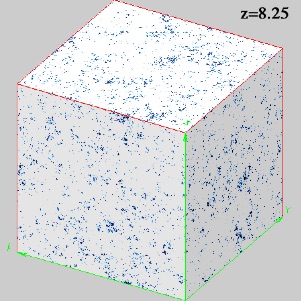
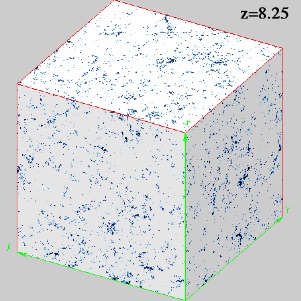
21-cm brightness temperature fluctuations (offset from the CMB)
post heating regime (T_S >> T_cmb):
Trac & Cen numerical simulation vs DexM
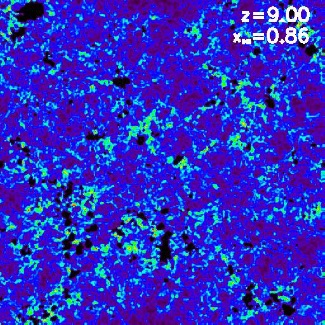
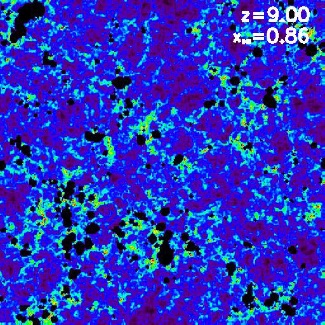
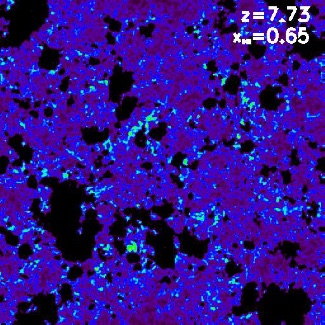
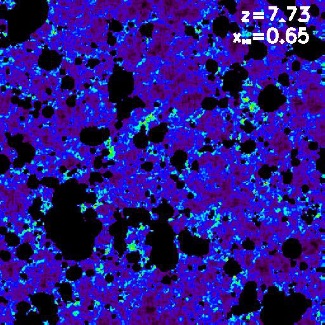
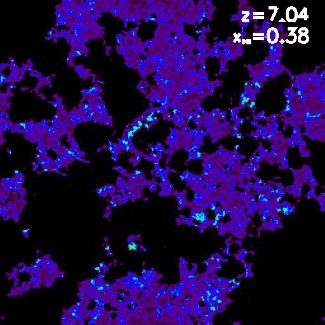


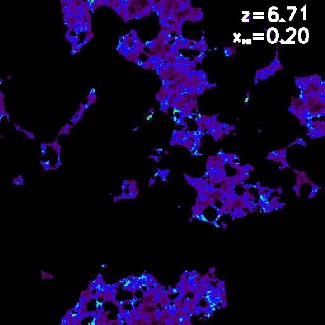
Movies:
Including inhomogenous x-ray heating and Lyman alpha pumping


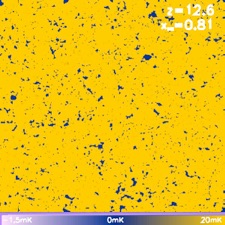


Ionizing flux fields
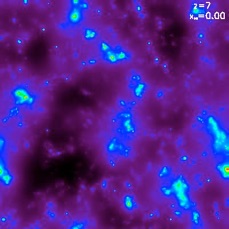
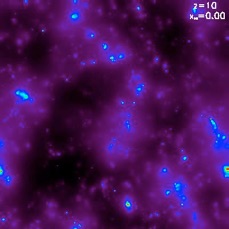
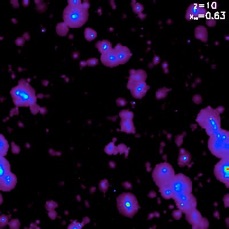


Semi-Numerical Cosmological Simulation Download Now
